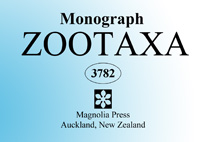Abstract
A biogeographic regionalisation of the Neotropical region is proposed as a hierarchical classification of sub-regions, dominions, provinces and districts. This regionalisation is based on biogeographic analyses of terrestrial plant and animal taxa, and seeks to provide universality, objectivity and stability, such that it can be applied when describing distributional areas of particular taxa or comparing different biogeographic analyses. The Neotropical region is currently comprised of three sub-regions (Antillean, Brazilian and Chacoan), two transition zones (Mexican and South American), seven dominions (Mesoamerican, Pacific, Boreal Brazilian, Southwestern Amazonian, Southeastern Amazonian, Chacoan and Parana) and 53 provinces. For some of the latter, sub-provinces and districts are recognized. Complete synonymies and brief descriptions of the areas are provided, as well as the endemic taxa that diagnose the different provinces.

